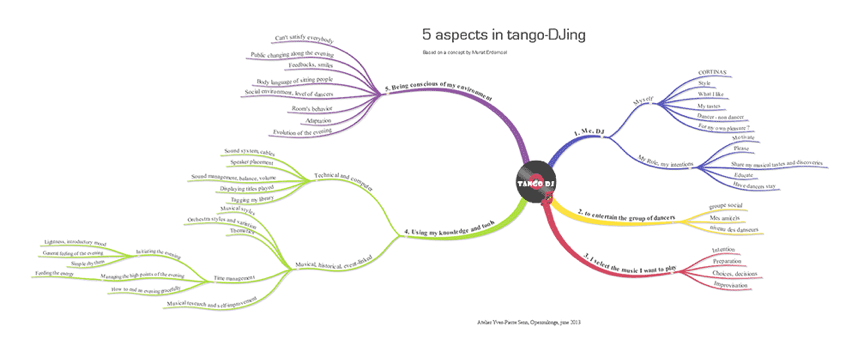





Ömer Faruk Erdemsel
Bursa Teachers Academy 1924
Murat Erdemsel.
Istanbul, 1982
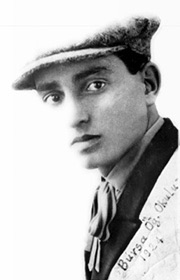

As a child, Murat was curious but also stubborn. He was raised as the second son of two teachers. His father taught photography at the academy of fine arts, his mother traveled nationally to teach arts and crafts for art institutes and also appeared on morning shows on TV. His grandfather, (pictures on the left) was yet another academic in the family where the principle; “Learn, so you can teach” was fundamental.
Music, then art, then dance...
Beginning with Murat’s very first lecture in 1997 on “modern art and music” given at Pera Palace’s Agatha Christy Hall for Young Presidents Organization (YPO), he has continued his interest in collecting and harvesting ideas on finding ways to connect fine arts with music. While still a young student at the academy of fine arts, he began teaching drawing classes at his small atelier. During that same year in 1997, and completely unforeseen to him, an interest in dance opened up new doors that reinforced and expanded his fascination with combining the languages of art and music. Since then, he has been traveling and searching for new and creative ways to communicate his passion for music, dance and visual art through lectures and workshops. The following are some of his findings as an educator, lecturer.
► 5 ASPECTS & SELF REGULATION
”Give a man a fish; you have fed him for today. Teach a man to fish; and you have fed him for a lifetime” - author unknown
While traveling and teaching at numerous festivals worldwide, I meet hundreds of students over the course of just a weekend whom I am passionate about helping and inspiring. From a student’s perspective at these events, there are often many lessons to be had from many different teachers, and the students sometimes receive a lesson without actually understanding the knowledge behind it. This simple idea inspired me to create a system for dancers who are capable of self regulating their learning experience. Let’s assume 5 irreducible components to the practice of dancing tango. Ingredients that bring everything together without missing anything important, These aspects are:

“I and my partner, listen to the music and move with our friends around us”
These aspects (in no order of importance) are the support columns of a bridge of information in the overall ability to learn, and to perform the dance. Understanding and embodying these 5 Aspects can guide us in regulating and increasing our awareness during learning and dancing, and can extend to organizing events and designing festival programs. They may even apply to our everyday lives.
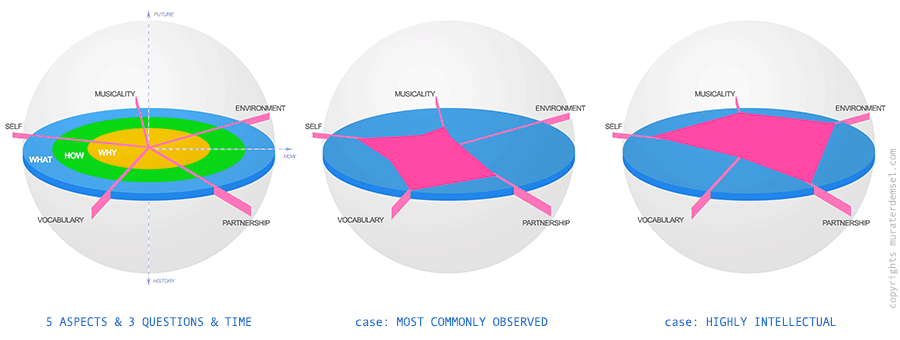
Here is a quote from one of our students and colleagues, Yves-Pierre Senn (Geneva, Switzerland) who uses the 5 Aspects & Self Regulation Concept in his teaching and DJing;
“For dancers, one of the greatest advantages of the 5-aspect view is probably that it enables us to maintain a balance between the different directions or specializations that we might otherwise get "stuck" in, during our learning process. It provides a framework for self-correcting and improving our dance, not only the "steps" (Which are just really one of the 5 aspects), but also in its other dimensions. It also provides a structure for meaningfulness, without which most of what we do loses a lot of interest. And finally, it serves also as a way to estimate and analyze performances and teachers; a way to distinguish between the simply amazing and the truly great. For teachers, I can imagine that this view enables us to "steer" the progress of students in a balanced way, making sure all aspects are covered, but without putting too much emphasis on any one of them. This view can also be used in other areas of performing; as in DJ-ing for tango events; this 5-aspects view is then very useful in understanding the various influences on an evening's unfolding, and the errors to avoid.”
Yves-Pierre Senn’s visual from his Tango DJing lecture;
Upon arriving at a Sunday morning tango workshop in December 2010, Michael Krugman (Maui, Hawaii) shared his surfing experience inspired by the “5 aspects in dance” workshop from the previous day.
“Just after the workshop, I caught a beautiful wave at Kanaha Beach Park and rode it all the way across the reef...
1- Myself; my posture, attitude, presence as a surfer.
2- My partner; my partner is the wave. When I surf, I "dance" with the wave, and generally speaking, the wave leads.
3- The music; for surfing this would be the specific conditions of the tide, the swell, the wind, the time of day, etc. and the unique qualities of each wave.
4- The steps/figures of the dance; very similar in surfing, since there are a wide variety of moves we use to interact with the wave. Take-off, bottom turn, trimming, cutback, tube-riding, nose-riding, are just a few. Every surfer knows what these are, and has his or her favorites.
5- The community; this would be the community of surfers in the water with me on any given day. By the way, like any good tango leader, a wave also has a shoulder, and the moment-to-moment behavior of the shoulder of the wave is one of the key signals that tells a surfer how to dance with the wave.
For me the extraordinary thing about that wave was how the shoulder kept opening and opening, inviting me to go forward.”
► UNDERSTANDING THE TANGO MUSIC WITH KIKI & BOUBA
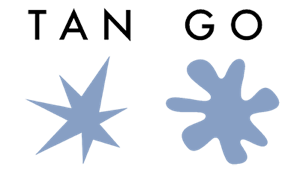
The human brain can easily extract abstract properties from shapes, colors and sounds and is also able to link them together. While there is a very wide range of possibilities that we can imagine KIKI and BOUBA correspond to, in tango music, I feel they correspond well to two terms we are already familiar with; “staccato” and “legato”. Since we all seem to have an instinctive, fundamental understanding of Kiki and Bouba in music, why not bring this into our tango vocabulary by choosing simple physical gestures both in the embrace and in our footwork? Tango music offers a good balance of rhythmic and melodic elements. Even though there are no drums in tango, and most of the instruments are melodic instruments except piano, they are capable of executing both Kiki and Bouba expressions.
> READ MORE at “riowang.blogspot” where the article is translated to Spanish, Italian, Russian and Hungarian.
► AS IT SEEMS, AS IT SOUNDS, AS IT FEELS... or AS IT IS
It’s true that our perception shapes our reality. Seeing, hearing and feeling only take on meaning when our brain correlates them to previous experiences. In other words, we actually “learn” to see, “learn” to hear, and of course each in our own way. With this premise, we must then accept that, we each bring our own unique interpretation to understanding, in this case, the art, music and the dance. This can be enriching, but the viewer’s subjective emotional response to the artwork might also interfere with observing it’s fundamental properties. Every true artist studies and imbues these properties during the creation of their work, which the viewer or student can learn to appreciate. As dancers, many of us do not know how to observe the richness of the music when we dance. As a result, we may become pre-occupied with trying to figure out useless patterns, feeling dissatisfaction and or frustration with our selves and our partners, and in some cases even getting in to disagreements and fights.


photo, Giannicola Lanzafame
► CIRCLES OF “why? how? what?” IN DANCE, “After Simon Sinek’s Golden Circles”
There is a commonly followed order of learning dancing. It is in fact similar to learning any other language. Students tend to want to first learn the WHATs of the dance which are the “steps” in dance and correlate to the “words” in language. Later, if their interest continues, they learn the HOWs, which is the “technique” in dance and “grammar” in language. Finally, much later they learn the WHYs. In language, this is where one experiences writing freely without being limited by any lack of skills in communicating. In tango dancing this translates to being able to improvise in such an effortless way that “you do it without doing it”. This process reflects a fairly common approach to new learning situations, which is analogous to the way one would peel an onion from the outside in.
Many tango educators are people who have answered the questions; “Why do I dance?”, “Why do I do what I do?” These are people who have discovered the heart of the dance in their own unique way and have been able to create their own way of looking at the entire experience of dancing from there. A curious shift happens when this occurs. Dancers comprehending the whole from the inside out will start with their reason for doing it (WHY), then choose methods and techniques (HOW) from it, and finally be able to choose the specific vocabulary (WHAT). For example, a dancer wanting an effortless and comfortable style of dancing, may chose to use a gentle, closer embrace in their upper body which will result in smaller and simpler steps with their feet. In contrast, a dancer performing on stage for an audience, may chose an embrace that is not necessarily gentle but can accommodate larger and faster motion and steps.

VANCOUVER, CANADA - PHOTO: YURIY DYBSKIY PORTLAND VALENTANGO FESTIVAL, U.S.A. - PHOTO: JANI KEINANEN
► SEEING THE BIG PICTURE
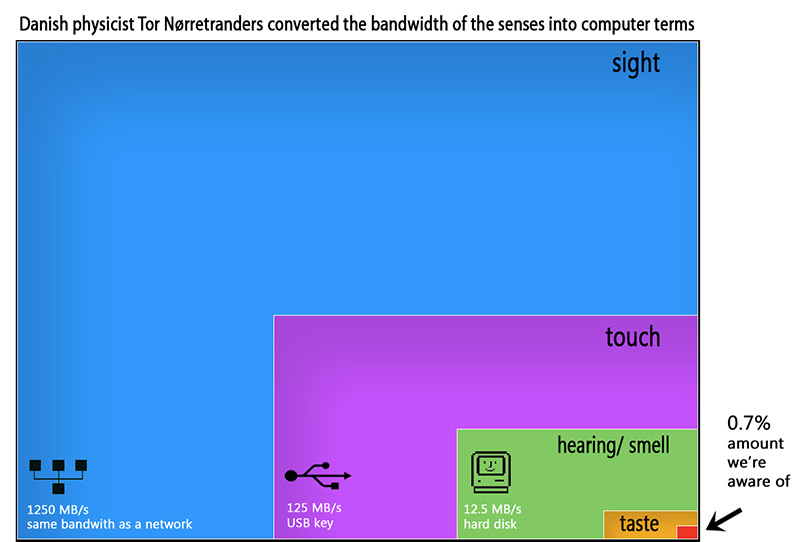
Seeing is believing. What about hearing? Is it also? Indeed, it's not fair to compare one sense with another. Our senses operate and serve us in very different ways. Even though our brain processes scents more slowly than some of our other senses, a particular scent can still evoke a strong emotional reaction. The lingering smell of something we remember from our childhood can sometimes evoke new associations and meaning in our present day life. On the other hand, as shown in the image, we process vision with impressive speed, which comes in very handy for survival. We use sight for balance and guidance during all our waking hours. Can we use vision as a tool to help clarify nebulous subjects, such as understanding music? I have found it to be so.
► VISUAL ANALYSIS OF TANGO MUSIC
Visualization of a tango song Poema. Inspired by Francisco Canaro song.
Every piece of tango music, whether it be instrumental or with vocals, contains a structure with it’s components placed in a well organized composition. Known as “form”, this aspect of music allows us to hear the music in sections. Musicians organize their compositions by arranging these sections, and as dancers, we have the option to organize our dance according to these sections as well. Just as every story is made up of chapters, each chapter made of paragraphs, then sentences and so on, every piece of tango music is made in a similar fashion. The singer performs in certain sections, and in other sections bandoneon or violin will also solo, often with the orchestra leader playing the short bridges to tie the sections together. Having said that, it is not very difficult to actually visualize the entire song made of these sections. As you can see in the images below, a map like template of a tango piece can be designed. During the lectures, students are invited to do simple drawings on these templates with a goal of identifying which sections in the composition of the song they hear are legato or staccato, and to identify which instruments are playing in a given moment in the music. The exercise gets repeated a few times and each time participants exchange their papers with others to review the way their neighbors heard the music.


Visit this page for the print out assignments.
► TRINITY: TANGO PAINTING, TANGO DANCING, TANGO MUSIC
My desire to find an effective way to explain the structure of tango music during lectures by utilizing visual images has given birth to a series of acrylic paintings. These are painted on 60 inch wide, panoramic scale canvases and represent some of the classic tango songs from the 1930s. By projecting a polar coordinated version of the paintings onto the dance floor and dancing within the images to the music they portray, the viewer is invited to experience the trinity of fine art, dance and music in a performance setting.
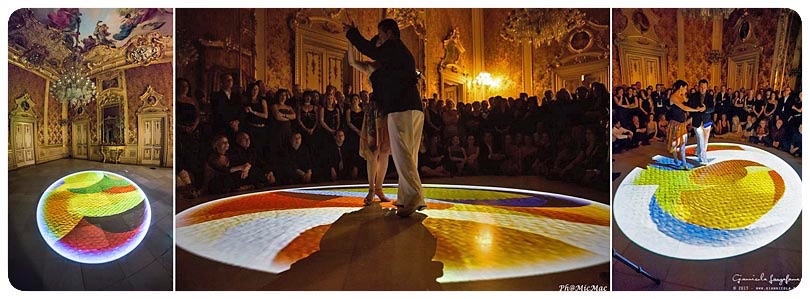
photo, MicMac photo, Giannicola Lanzafame
► THE 8 ELEMENTS OF TANGO MUSIC
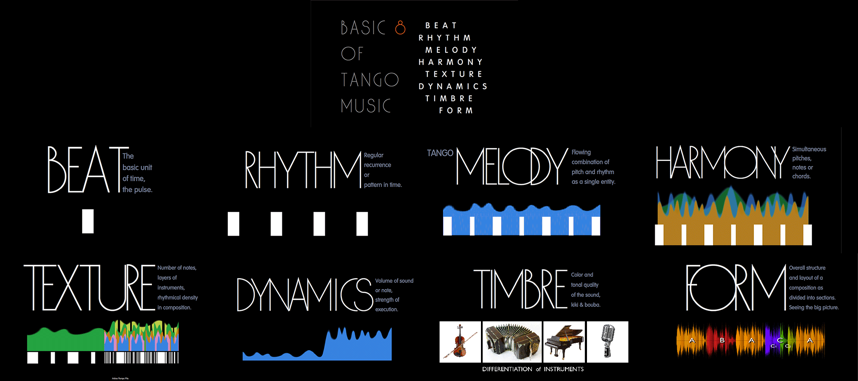
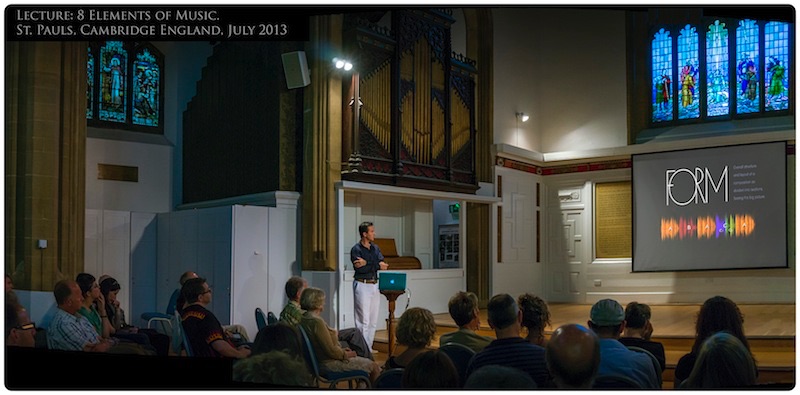



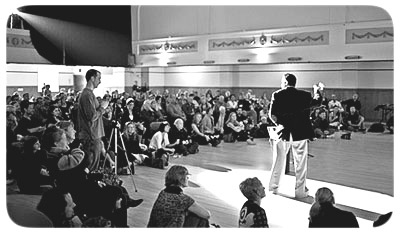

PORTLAND VALENTANGO FESTIVAL, U.S.A. - PHOTO: JANI KEINANEN

